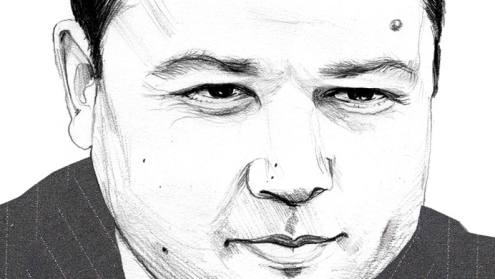Will Asia dominate the global economy and finance? This is very much a key question in the West, but is it the wrong question?
Asia is not one voice or one unitary region, but a mosaic of different languages and cultures, with vastly different levels of development. Geographically, the Asian continent stretches from the Bosphorus in Turkey to the Bering Strait, but the East Asian Summit recently discussed a Regional Comprehensive Economic Partnership covering not only Asean+3 (Association of South-east Asian Nations plus China, Japan and South Korea) and India, but also Australia and New Zealand.
Editor's choice
Demographically, Asia’s current population comprises three major waves: 1.3 billion Chinese shifting into middle class, followed by 1.2 billion people in India and a Muslim community of 1.1 billion residing in the resource-rich areas of Turkey, the Middle East, central and south Asia, Malaysia and Indonesia. Japan, South Korea and other richer economies face more complex challenges of ageing populations.
According to International Monetary Fund (IMF) estimates, Asia (excluding central Asia), accounted for 15% of global gross domestic product (GDP) in 2010 and 21.2% of global financial assets (banking, bond markets and equity market capitalisation), excluding derivatives. The EU and North America accounted for 31.3% of global GDP and 62% of global financial assets. Furthermore, these advanced markets of Europe and America accounted for more than 90% of financial derivative markets by notional value. But, such a dominant share of financial assets disguises the fact they were financed by leverage as the net foreign liability of the G-3 reserve currency countries (the eurozone, UK and US) was $6400bn, or 20.8% of global GDP in 2010.
The Asian Development Bank study of Asian growth to 2050 estimates that Asian economies will account for roughly half of world GDP and half of world financial assets by that time, based on current trends. It did warn, however, that Asian prosperity is neither inevitable nor pre-ordained. There could be pitfalls along the way, such as natural disasters, wars and policy errors.
Implications for Asia
Nevertheless, if such optimistic projections come true, what are the possible implications for the global financial architecture? The first is that a multipolar system of international reserve currencies will emerge. By 2050, unless there are major crises, China’s renminbi and the Indian rupee will join the ranks of the international reserve currencies, such as the dollar, euro, sterling and yen.
Second, the special drawing rights assets of the IMF logically may serve as an ideal international reserve currency. The world as a whole cannot suffer Triffin’s Dilemma, the curse by which reserve currencies must run current account deficits that become unsustainable over time.
However, in real-politik terms, this is unlikely to be realised. The reason is that in the short term, the dominant shareholders in the IMF are too preoccupied with their internal problems to change the global architecture, unless they receive considerable concessions from the surplus economies. This is equally unlikely. The only impetus to real global financial architectural reform is another severe crisis or the worsening of the current one, both of which are possible.
Third, as economic historian Barry Eichengreen noted, it took the US dollar nearly 70 years to displace sterling as the dominant reserve currency. Leading reserve currency status is a function not just of economic power, but also military, financial and institutional resilience. The tipping point came when New York developed highly liquid markets in the dollar after the Second World War.
Consequently, the renminbi and the Indian rupee are decades away from challenging the dollar and the euro, given the fact that both still have exchange controls and limited domestic financial market liquidity. Without developing deep and liquid domestic financial markets, Asian economies will still continue to depend on Western financial centres as their main channel of savings. This is one of the current sources of strategic tensions.
The mistakes of others
There are valuable lessons to be learnt from the ongoing European debt crisis. First, if the system as a whole is overleveraged and much of the funding depends on a dominant banking system, this is an accident waiting to happen. Asians learnt from the Asian financial crisis of the late 1990s that maturity and foreign exchange mismatches must be avoided, both lessons repeated in Europe.
Net exposures that look small can disguise huge gross imbalances. Overleveraged eurozone economies and banking systems can only be sustained if surplus economies are willing to fund them and if interest rates remain low.
Markets can underprice risks, especially if you do not monitor the ‘shadow’ credit created off-balance sheet and offshore, and both monetary and fiscal policies are looser and longer than appropriate. US economist Hyman P Minsky was spot on about stability creating its own instability.
The final lesson that can be taken from the European debt crisis is that the financial structure and its inter-relationship with the real sector structure matters. As US Federal Reserve governor Daniel K Tarullo remarked recently: “When one considers the significance of issues concerning industry structure for the design of an effective and efficient regulatory system to contain systemic risk, it is surprising that relatively little research has been undertaken in this area, even in the aftermath of the financial crisis.”
Seeing the light
Another issue is the ‘shadow’ banking system, which in itself is a misnomer. These institutions were never hidden in the shadows, but were always growing giants for all to see, except that silo-based regulators and policy-makers ignored their systemic interconnectivity with the banking system.
Unfortunately, only now after five years of crisis are we beginning to address the shadow banking system. In the meantime, sanguine monetary policy and under-regulation during the great moderation have been replaced by even looser monetary policy and over-regulation in the banking system. On top of Basel III, Dodd-Frank, Solvency 2, Volcker, Vickers, Liikanen and national regulations, there is a flood of regulatory actions on money laundering and tax evasion that are simultaneously reducing bank equity while requesting them to raise capital under the new rules.
The global banking industry is facing contradictory policies – an expansionary monetary policy that subsidises every borrower and punishes savers, including pensioners, and deflationary regulatory action that increases lending costs and threatens to slow growth. It is as if the doctors are prescribing stimulants and depressants at the same time. Unfortunately, it is the real economy that suffers the consequences.
The fact that the US is delaying the implementation of Basel III capital rules and European countries are formulating their own versions means that Asian economies are at the forefront of implementing Basel III capital requirements. The complex liquidity requirements were still being finalised as 2012 came to a close. The Bank of England has openly questioned whether the Basel III rules are too complex. It is therefore not surprising that Asian bankers are questioning why they should be taking a complex medicine for an illness they do not yet have, prescribed in haste for someone who may be thinking twice about taking it, the side-effects of which are not fully understood.
Asian consensus
One needs to ask how the structure of the financial system can be designed, given such regulatory and policy uncertainty. Asian views are diverse, but there is consensus that finance must serve the real sector. Efforts are now concentrated on multilateralising the Chiang Mai Initiative’s swap arrangements to improve regional safety nets, and enhancing regional liquidity. There is also awareness that more attention must be paid to helping small and medium-sized enterprises, enhancing trade finance and supporting infrastructure investments. To do this will require deepening long-term pension and insurance funds that can absorb long-term risks and, contrary to the trend in the West, introducing asset securitisation that will reduce maturity mismatches.
The rise of new instruments such as Islamic finance, which has reached $1200bn in size, shows Asia’s experimentation in developing new channels of financial intermediation. There is a conscious move away from ‘short termism’ to concentrate on rebuilding the trust between the financial community and the real economy, not by greater regulation, but by engagement.
There will be diverse approaches within Asia to achieve the larger goals of growth, stability and equity. There will be higher risks, but without risks, there will be no growth. It is the rise of diverse Asian views and paths to development, strange as they may seem to conventional wisdom, that will make the world more interesting and less fragile.
Andrew Sheng is president of Fung Global Institute.












